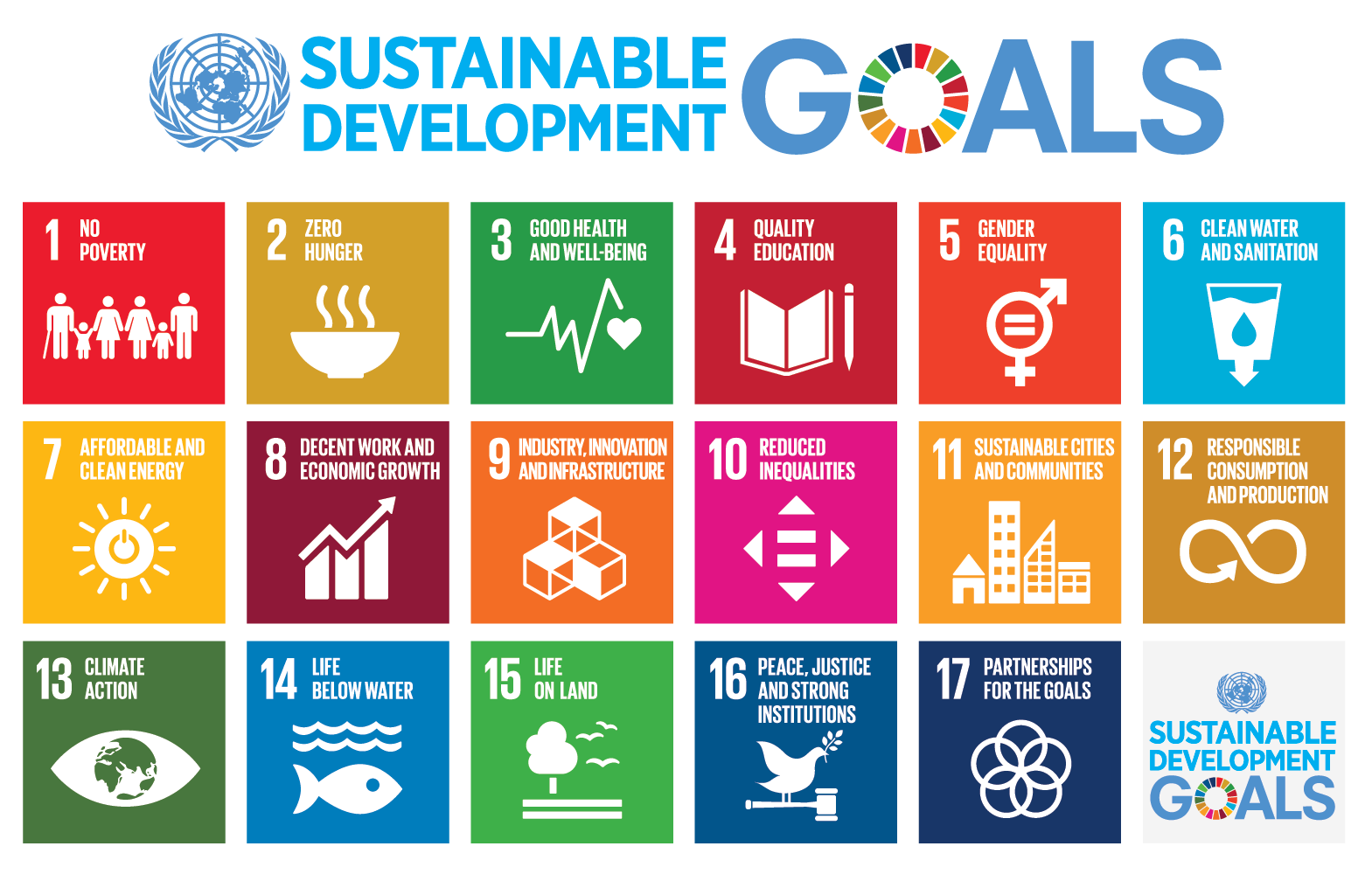3.6: Addressing the Challenges
- Page ID
- 76115
Throughout the first five steps outlined above, humanity’s struggle for security showed little evidence of any globally collective consciousness. The first major concerted efforts at the international level were made by the League of Nations, established in 1920 and succeeded by the United Nations from 1945. They focused on the socio-political pillar and only gradually included some economic and health-related aspects of human security. Environmental security was not addressed by any international initiative until the UN’s eight Millennium Development Goals (MDGs), which represented a token step in that direction (UNEP-MAB, 2005). In 2015 they were replaced by the Sustainable Development Goals (SDGs; Figure 3.1) (UN, 2015) which placed environmental security on the conceptual map of the international community. Their achievement is planned for 2030.

The 17 SDGs represent the most significant global collaborative initiative towards a sustainable future, and the first that takes into account some of the ecological context. They span diverse areas addressing the four pillars and focus on many significant sources of insecurity. However, they collide with the fundamental problem of ecological overshoot. This is illustrated in Table 3.1.
In the right column, the SDGs are classified as achievable, partly achievable, or unachievable: those SDGs that depend on natural resources are now unachievable; those that depend primarily on social justice are achievable; three SDGs depend on both and are therefore partly achievable. The respective numbers of the SDGs are specified.
The centre column lists the eight MDGs with their respective numbers where they correspond with the focus areas of the SDGs. They are again classified as achievable (aligned to the left side), unachievable (aligned right), or partly achievable (centered). Only one MDG, number 7 Ensure Environmental Sustainability, falls into the latter category. Some achievement on number seven was possible through the equitable allocation of social and economic capital; but its dependence on planetary resources prevented any substantial progress. By their target date of 2015 most of the MDGs’ targets had not been achieved.
| Focus | Achievable | Partly achievable | Unachievable |
|---|---|---|---|
| Poverty | No poverty (#1) | ||
| Food security | Zero hunger (#2) | ||
| Health security | Good health (#3) | ||
| Education | Quality education (#4) | ||
| Gender equality | Gender equality (#5) | ||
| Water | Clean water, sanitation (#6) | ||
| Energy | Affordable, clean energy (#7) | ||
| Economic growth, employment | Decent work, economic growth (#8) | ||
| Infrastructure, industry | Industry, innovation, infrastructure (#9) | ||
| Inequality | Reduced inequalities (#10) | ||
| Cities | Sustainable cities, communities (#11) | ||
| Consumption, production | Responsible consumption, production (#12) | ||
| Climate change | Climate action (#13) | ||
| Oceans | Life below water (#14) | ||
| Terrestrial ecosystems | Life on land (#15) | ||
| Societies | Peace, justice, strong institutions (#16) | ||
| Global partnerships | Partnerships for the goals (#17) |
The problem arises from the fact that seven SDGs (1, 2, 3, 8, 9, 11, 12) require primarily that additional ecosystem services and natural resources be mobilized. In contrast, three other SDGs (13, 14, 15) require that our demands on the biosphere be reduced. Regardless of which of those SDGs are prioritized, or whether we try to achieve them all equitably, some of them will slip even further from our grasp (von Weizsaecker & Wijkman, 2018, p. 39). Five other SDGs (4, 5, 10, 16, 17) depend primarily on social justice, ethical changes and legislative reform – resources that are not subject to physical limitations. They are exempt from the constraints imposed by our overshoot, which renders them more achievable. The remaining SDGs (6, 7, and partly 13 on climate change) depend on both kinds of resources. Comparing the entries for the MDGs and SDGs indicates that very limited improvement was achieved on the grantability issue.
Considering that the SDGs and the associated Agenda 2030 mission document were developed by some of the world’s most educated minds, and that the SDGs are much celebrated for their ‘progressiveness’, we are faced with what appears to be a huge blind spot in the minds of many educated people (O’Neill et al., 2018). The above-mentioned warnings by the scientific community (Ripple et al., 2017) were hardly taken into account. This has been interpreted as a fundamental failing in today’s systems of governance and education (Lautensach, 2018).
The example of the SDGs illustrates, on the one hand, the global extent of shared concern and of corresponding efforts at this stage. On the other hand, their limited success to date (UN, 2018) indicates a persistent blindness to basic scientific understanding of what sustainability means; it shows an insufficient commitment to incur the necessary sacrifices that a globally effective Transition to sustainability would entail; and it takes no notice of crisis causation, ecological overshoot and the ongoing expansion of ecological footprints.

